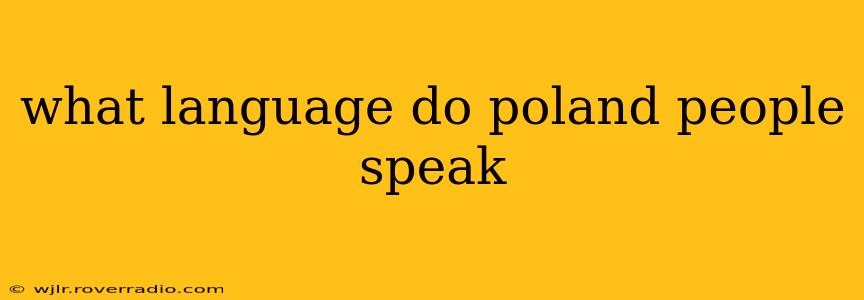The official language of Poland is Polish, a West Slavic language with a rich history and unique characteristics. While Polish is the primary language spoken throughout the country, understanding its nuances and regional variations is key to appreciating its complexity and the cultural identity it represents.
What is the Polish Language Family?
Polish belongs to the West Slavic branch of the Indo-European language family. This means it shares ancestry with other Slavic languages like Czech, Slovak, and Sorbian, but also has its own distinct features that set it apart. Its evolution over centuries reflects Poland's history, absorbing influences from neighboring languages while maintaining its unique grammatical structure and vocabulary.
Are There Any Regional Dialects in Poland?
Yes, like many languages, Polish exhibits regional variations in pronunciation, vocabulary, and even grammar. These dialects, while mutually intelligible to speakers of standard Polish, often reflect local customs and historical influences. While standard Polish is used in education, media, and government, you might encounter subtle differences in speech depending on the region of Poland you're in. These variations add to the richness and diversity of the Polish language.
What Other Languages Are Spoken in Poland?
While Polish is dominant, other languages are spoken in Poland, often reflecting historical migrations and minority populations. These include:
- German: Spoken primarily in areas bordering Germany, reflecting historical ties and migration patterns.
- Ukrainian: Spoken in southeastern Poland, primarily in areas with a significant Ukrainian population.
- Belarusian: Spoken in smaller communities near the Belarusian border.
- Silesian: A controversial language spoken in Upper Silesia, with ongoing debate about its classification as a distinct language or a dialect of Polish.
- Kashubian: Another West Slavic language, spoken by a small minority in the Kashubia region of northern Poland.
- English: Due to increasing globalization and tourism, English proficiency is growing, especially among younger generations.
How is Polish Different from Other Slavic Languages?
While sharing roots with other Slavic languages, Polish possesses several unique features:
- Complex Phonology: Polish boasts a rich inventory of sounds, including numerous consonants and a distinctive stress pattern.
- Grammatical Gender: Like many Slavic languages, Polish has grammatical gender (masculine, feminine, and neuter), affecting noun declensions and adjective agreements.
- Complex Morphology: Polish possesses a complex system of noun declensions and verb conjugations, reflecting a rich grammatical structure.
Is Polish a Difficult Language to Learn?
The difficulty of learning any language is subjective, but Polish is generally considered a challenging language for native English speakers due to its complex grammar and pronunciation. However, with dedication and the right resources, it's certainly achievable.
Conclusion:
Polish is the vibrant and expressive language of the Polish people, deeply interwoven with their cultural identity. While standard Polish unites the nation, regional dialects add a rich tapestry of variation. The presence of other languages further reflects Poland's diverse history and multicultural landscape.
